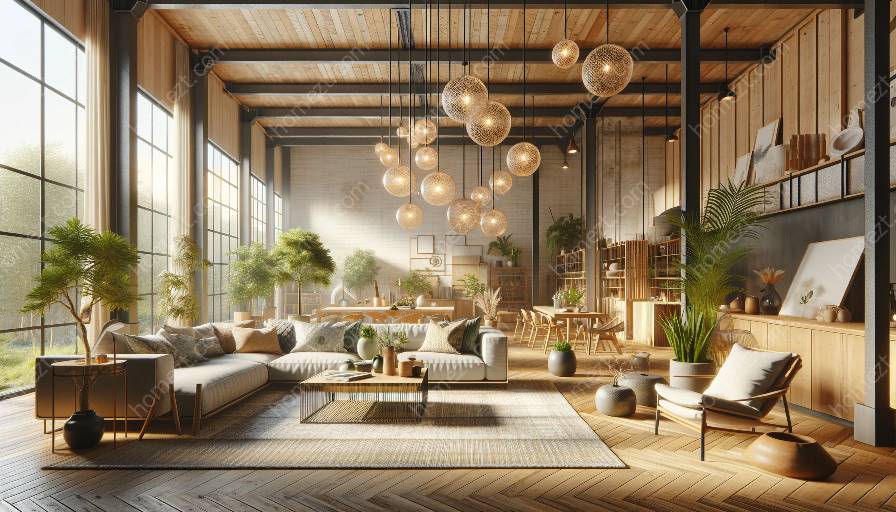Biophilic design has emerged as a significant trend in sustainable interior design, focusing on incorporating natural elements and principles into the built environment to foster a sense of connection to nature. This approach prioritizes the well-being of occupants, environmental sustainability, and the overall aesthetic appeal of interior spaces.
Biophilia and Sustainable Design
Biophilic design operates on the idea that humans have an innate connection to nature and benefit from being surrounded by natural elements. It integrates elements such as natural light, vegetation, natural materials, and views of the outdoors into interior spaces. Through this approach, biophilic design promotes sustainable practices by reducing energy consumption, enhancing indoor air quality, and creating healthier and more productive environments.
Compatibility with Sustainable and Eco-Friendly Design
Biophilic design aligns with sustainable and eco-friendly design principles by emphasizing the use of renewable materials, energy-efficient strategies, and sustainable building practices. It complements the broader goal of creating environmentally conscious interiors that minimize the ecological footprint and prioritize the health and well-being of occupants.
Benefits of Biophilic Design
By incorporating biophilic design principles, interior spaces can experience a range of benefits, including improved air quality, reduced stress levels, increased creativity and productivity, and overall enhanced well-being. Additionally, the integration of natural elements can contribute to the visual appeal and uniqueness of interior design, creating a more inviting and harmonious atmosphere.
Biophilic Design Elements
Key elements of biophilic design encompass various components, such as natural light and ventilation, indoor plants and green walls, water features, natural materials like wood and stone, and visual connections to nature. These elements are strategically integrated into the design to evoke a sense of biophilia and create a seamless connection between the indoor environment and the natural world.
Successful Implementation
Successful integration of biophilic design involves considering factors such as spatial layout, material selection, lighting design, and access to nature views. It requires collaboration among architects, interior designers, and other professionals to ensure that biophilic principles are effectively incorporated into the interior environment.
Case Studies and Examples
Several real-world examples demonstrate the effective application of biophilic design in sustainable interior projects. These case studies showcase how biophilic principles can transform interior spaces to enhance occupant well-being, reduce energy consumption, and establish a deeper connection to nature within the built environment.
Conclusion
In conclusion, biophilic design serves as a crucial element in sustainable interior design, promoting a holistic approach that prioritizes environmental sustainability, occupant health, and aesthetic appeal. By embracing the principles of biophilia and integrating natural elements into interior spaces, designers can create sustainable and eco-friendly environments that foster a deeper connection to nature and enhance the overall quality of life for occupants.


























